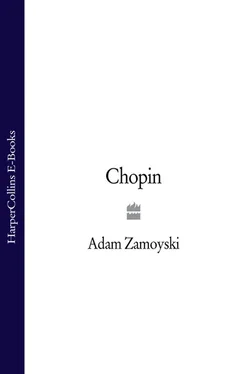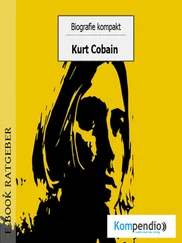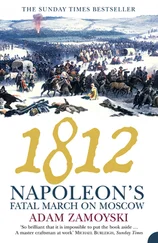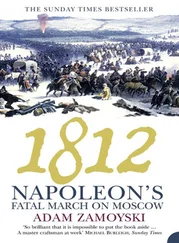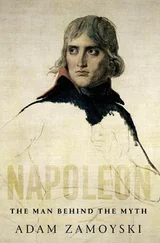Chopin
Prince of the Romantics
Adam Zamoyski


Copyright Copyright Dedication Illustrations Preface One A Prodigy Restrained Two School Days Three Musical Genius Four Adolescent Passions Five Vienna Six Romantic Paris Seven Pianist à la Mode Eight Second Love Nine Art and Politics Ten Love Above All Eleven Conjugal Life Twelve The Church of Chopin Thirteen The End of the Affair Fourteen An Ugly Fracas Fifteen London and Scotland Sixteen The Jealousy of Heaven Appendix A Appendix B Notes Sources Index Other Books By About the Publisher
William Collins
An imprint of HarperCollins Publishers Ltd. 1 London Bridge Street London SE1 9GF
www.harpercollins.co.uk
Published by HarperPress in 2010
Copyright © Adam Zamoyski 2010
Adam Zamoyski asserts the moral right to be identified as the author of this work
A catalogue record for this book is available from the British Library
All rights reserved under International and Pan-American Copyright Conventions. By payment of the required fees, you have been granted the non-exclusive, non-transferable right to access and read the text of this ebook on-screen. No part of this text may be reproduced, transmitted, down-loaded, decompiled, reverse engineered, or stored in or introduced into any information storage and retrieval system, in any form or by any means, whether electronic or mechanical, now known or hereinafter invented, without the express written permission of HarperCollins ebooks
HarperCollins Publishers has made every reasonable effort to ensure that any picture content and written content in this ebook has been included or removed in accordance with the contractual and technological constraints in operation at the time of publication
Source ISBN: 9780007341849
Ebook Edition © FEBRUARY 2010 ISBN: 9780007351824
Version: 2017-04-25
To Emma
Cover Page
Title Page Chopin Prince of the Romantics Adam Zamoyski
Copyright
Dedication
Illustrations
Preface
One A Prodigy Restrained
Two School Days
Three Musical Genius
Four Adolescent Passions
Five Vienna
Six Romantic Paris
Seven Pianist à la Mode
Eight Second Love
Nine Art and Politics
Ten Love Above All
Eleven Conjugal Life
Twelve The Church of Chopin
Thirteen The End of the Affair
Fourteen An Ugly Fracas
Fifteen London and Scotland
Sixteen The Jealousy of Heaven
Appendix A
Appendix B
Notes
Sources
Index
Other Books By
About the Publisher
Justyna Chopin.
Nicolas Chopin.
The house at Żelazowa Wola in which Chopin was born.
Ludwika Chopin.
Izabela Chopin.
Emilia Chopin.
The Warsaw Lycée.
The Church of the Holy Cross in Warsaw.
Wojciech Żywny.
The drawing room of the Chopin apartment.
Józef Elsner.
Tytus Woyciechowski.
Chopin drawn by Eliza Radziwiłł, 1826.
Chopin at the age of twenty, by Ambroży Mieroszewski.
Konstancja Gładkowska.
Jan Matuszyński.
Chopin, portrait by an unknown artist, early 1830s.
Hector Berlioz.
Franz Liszt.
Felix Mendelssohn.
Hiller and Chopin, a contemporary medal.
Vincenzo Bellini.
Chopin in the mid-1830s.
Delfina Potocka.
Chopin’s apartment on the rue de la Chaussée d’Antin.
Astolphe de Custine.
Wojciech Grzymała.
Julian Fontana.
Maria Wodzińska.
Chopin, watercolour by Maria Wodzińska, 1836.
George Sand.
Marie d’Agoult.
George Sand’s house at Nohant.
Chopin in the early 1840s.
Chopin, drawing by Franz Xaver Winterhalter, 1847.
Ignaz Moscheles.
Pauline Garcia-Viardot.
Auguste Franchomme.
Adam Mickiewicz, sketch by Delacroix.
Stefan Witwicki.
Bohdan Zaleski.
Eugène Delacroix.
Chopin, caricature by Pauline Viardot, 1844.
Marcelina Czartoryska.
Maria Kalergis.
Chopin, photograph taken during the last months of his life.
Jane Stirling.
Two centuries have passed since Chopin came into this world, yet his legacy is all around us today. The quiet revolution he wrought influenced the development of Western music profoundly, and he is still one of the very few most widely studied and revered composers. For many, he is the object of a cult. Yet most people know little of his life, of the man, his thoughts and his feelings; his public image is a sugary blur of sentimentality and melodrama.
The aim of this book is to cut through the myths and legends, to delve into everyday reality in order to tell the story of his life, and to reveal all that can be discovered of Chopin as a person. I had already attempted this in a previous book, published in 1979, and since this has been out of print for many years, I decided to update it, taking into account all the new material that has come to light and the many excellent studies on specific aspects of Chopin’s life that have appeared since then.
I also decided that some of these were worth exploring further. I felt I should devote more space to the composer’s state of health, which has been the subject of professional study in recent years. And I wished to place him within the intellectual and spiritual environment of his day, about which I had learnt much in the intervening period. In the process, I found myself reworking the text thoroughly. So, although I held to my original approach and did not fundamentally alter the structure, I believe this to be in many respects a different book, and that is why I have issued it under a new title.
Adam Zamoyski
London, 2009
On 30 October 1849 a large crowd gathered at the church of La Madeleine in Paris, and hundreds of carriages clogged the surrounding streets, causing a jam that stretched as far as the place de la Concorde. The front of the enormous temple-like church was draped with panels of black velvet bearing the initials ‘F.C.’ embroidered in silver. Entry was by ticket only, and those who had not managed to obtain one thronged the monumental steps.
‘At noon, the grim servants of death appeared at the entrance to the temple bearing the coffin of the great artist. At the same time a funeral march familiar to all admirers of Chopin burst from the recesses of the choir. A shiver of death ran through the congregation,’ recalled the French poet Théophile Gautier. ‘As for me, I fancied I could see the sun grow pale and the gilding of the domes take on an evil greenish tint…’ 1
Mozart’s Requiem was sung, with the legendary mezzo-soprano Pauline Garcia-Viardot and the famous bass Luigi Lablache supported by the orchestra and choir of the Paris Conservatoire, the finest in Europe. During the offertory, the organist of the Madeleine played two of Chopin’s preludes.
After the service, the coffin was borne from the church to the cemetery of Père Lachaise. The mourners were led by Prince Adam Czartoryski, widely regarded as Poland’s uncrowned king, and the pall-bearers included the most famous operatic composer of the day, Giacomo Meyerbeer, and the painter Eugène Delacroix. Behind the coffin came dozens of musicians and artists, and thousands of the dead man’s friends and admirers, with even the grandest ladies walking on foot, their escutcheoned carriages following in a long cortège. At the cemetery, the coffin was lowered into the grave without a homily, and the mourners dispersed in silence. 2
Читать дальше
